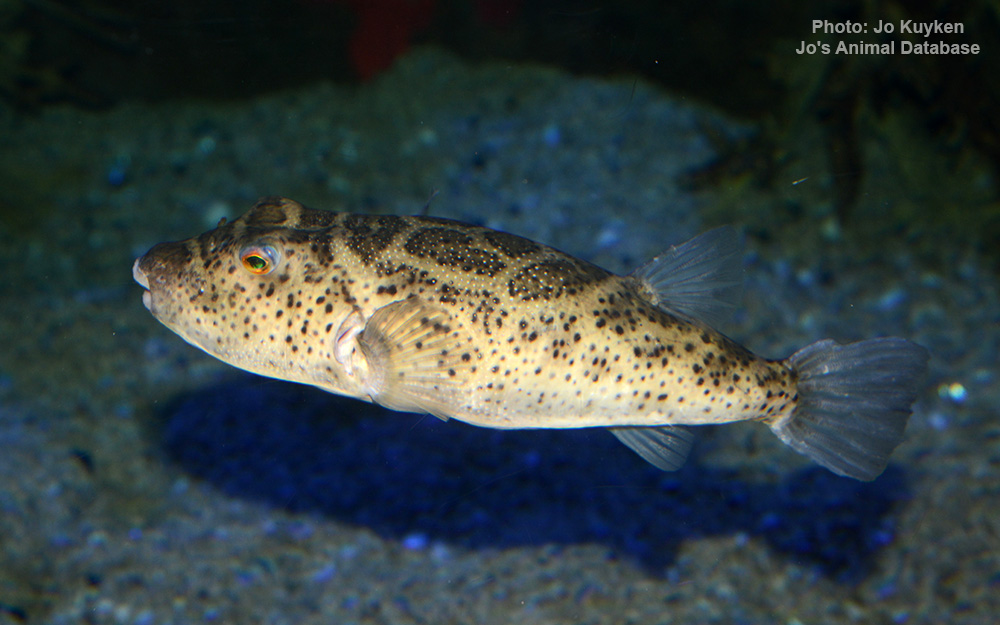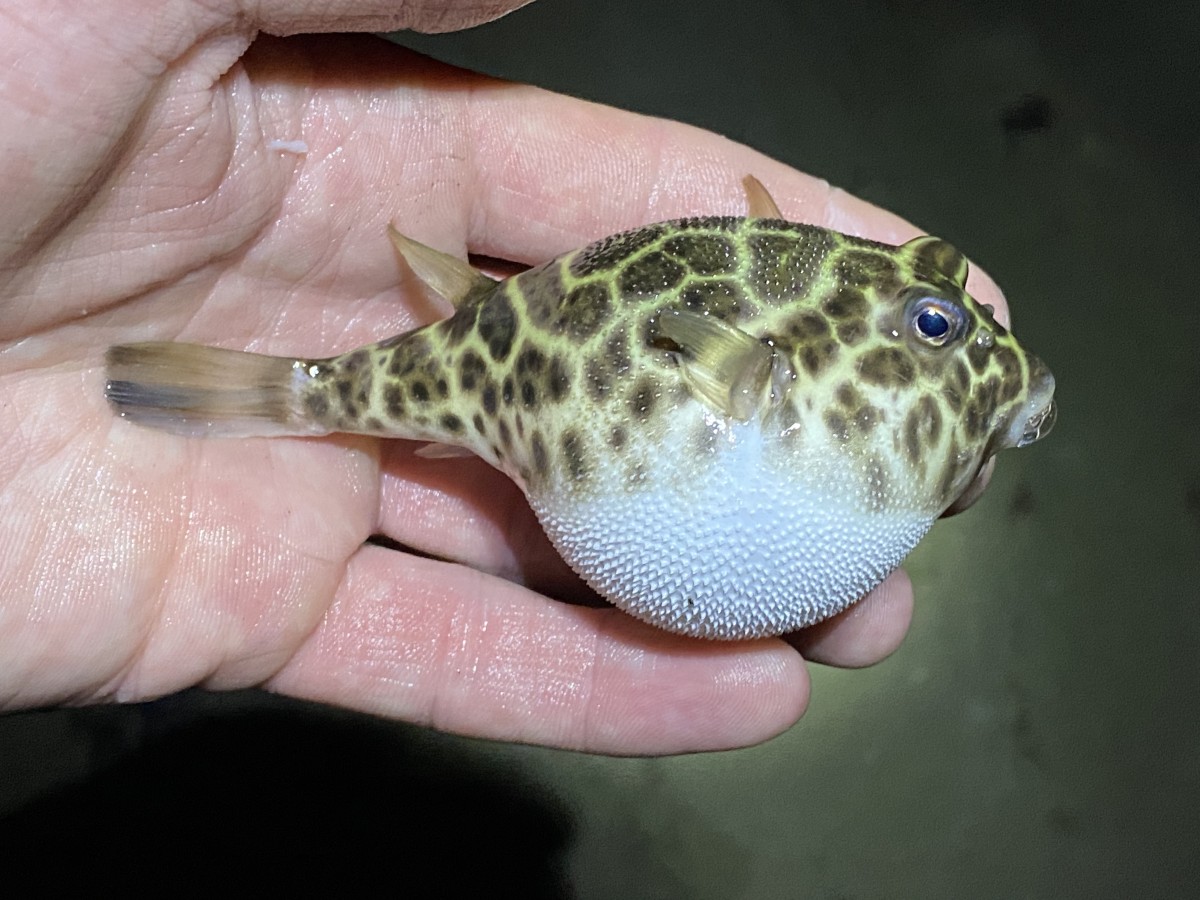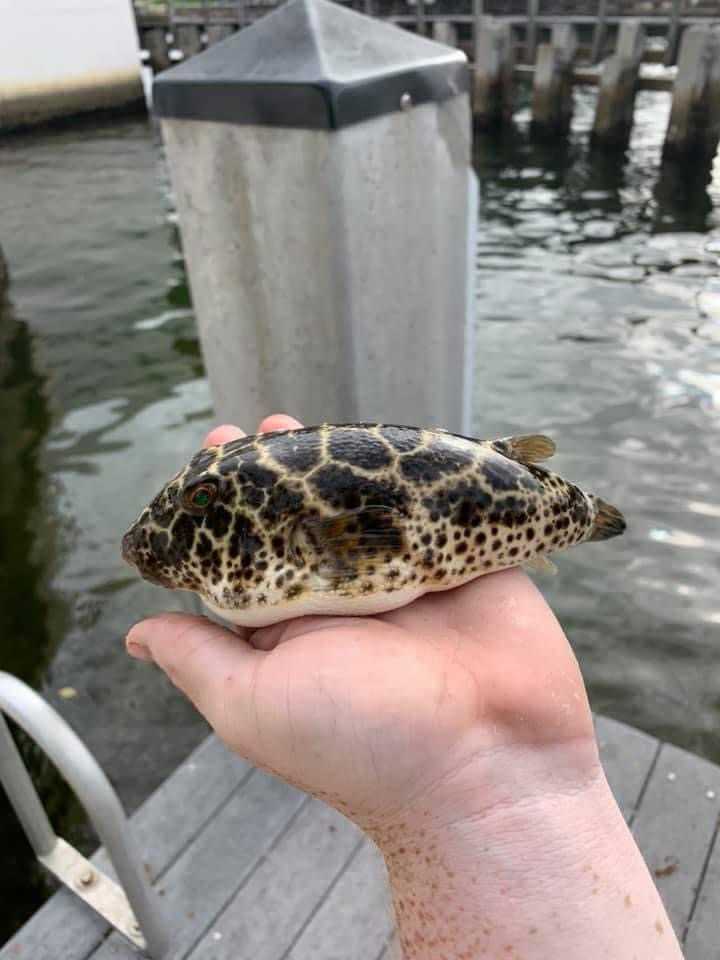Checkered puffer
(Sphoeroides testudineus)

Image source: Jo's Animal Database
Classification
General data
The checkered puffer, Sphoeroides testudineus, is one of several fish species belonging to the family Tetradontidae, meaning four teeth. Puffers have four tooth plates arranged in quadrants, with two teeth on the bottom and two on the top. These teeth form a strong, heavy beak capable of cracking through hard prey such as mollusks and crustaceans, as well as sipunculids, tunicates, seagrass and detritus. Puffers are named for their ability to swell by swallowing water or air when threatened.
They have no spinous dorsal fin, absent or reduced scales, sandpapery denticles on various areas of the body, and a reduced gill opening. Identification of species is determined in part through color, pattern, and the presence and number of spines and fleshy tabs, or lappets, on the skin (Robins & Ray 1986).
The checkered puffer is pale tan to yellowish with a polygonal or square network of lines centered on a bulls-eye pattern on the midback in front of the dorsal fin. Lines are dark gray to olive, with small, dark brown spots on cheeks and lower sides. The abdomen is whitish and unmarked. Dark bands are present on the caudal fin.
The checkered puffer ranges from Rhode Island to Florida, Bermuda, and the southeast Gulf of Mexico to the southeastern coasts of Brazil. It is common in bays, seagrass beds, tidal creeks, mangrove swamps, and into freshwater areas.













